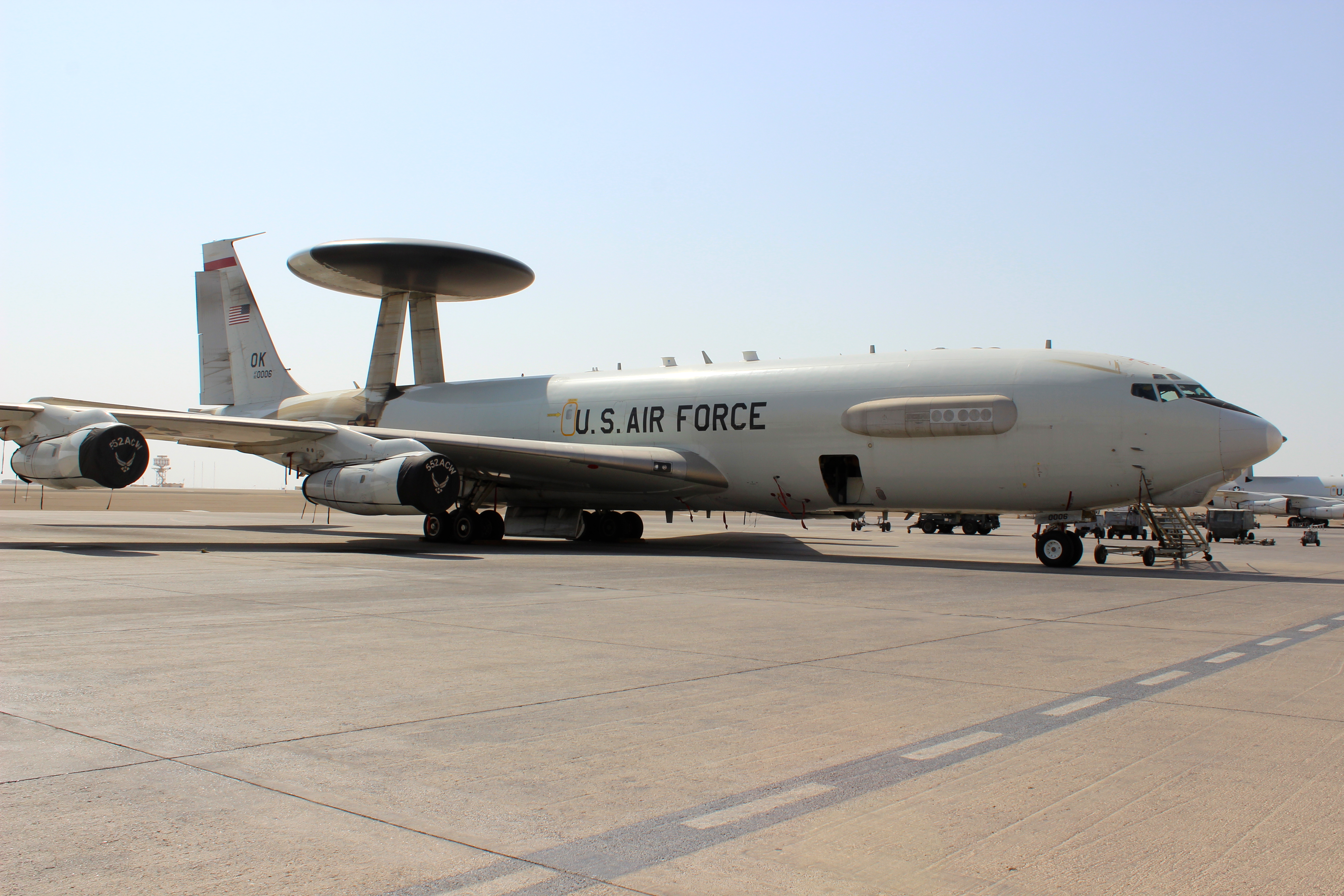An E-3 Sentry on the flight line at Al Dhafra AB, UAE. Photo by Jennifer Hlad.
AL DHAFRA AB, United Arab Emirates—In a row of arched sand-colored tents behind a chain-link fence, hundreds of airmen, soldiers, marines, and coalition troops watch and control the air battles over Iraq, Syria, and Afghanistan.
The 727th Expeditionary Air Control Squadron, known as Kingpin, has a constant live picture of the airspace over Operation Inherent Resolve, the Arabian Gulf, and Operation Resolute Support, explained SrA. Steve Klinger, who spoke about the unit during Air Force Magazine’s recent visit there.
Kingpin directs joint and coalition fighter, bomber, tanker, surveillance, and reconnaissance aircraft, as well as remotely piloted aircraft, Klinger said, and draws on sensors throughout the region to manage the battlespace.
“We help provide the picture,” because without command and control, everything falls apart, he said.
However, Kingpin isn’t the only tactical command and control asset based here. Al Dhafra is the only location in the CENTCOM area of responsibility with E-3 Sentry Airborne Warning and Control Systems, or AWACS.
The job of both Kingpin and the AWACS is “to orient the shooter,” said Lt. Col. Neal Hinson, deputy commander of the 380th Expeditionary Operations Group. “They will point the shooter towards the threat.”
While Kingpin is on the ground, the AWACS can see the AOR from the air, and sort out who are the “good guys” and who are the “bad guys,” Hinson said.
First Lt. Mike Lamb, an air weapons officer on the mission crew of the E-3, said his job is “very similar” to what Kingpin does on the ground.
Lamb said he makes sure US and coalition aircraft are deconflicted from each other and civilian air traffic, and that they all stay safe.
Additionally, he said, “these planes need gas. And with how vast our AOR is out here, tankers will break for maintenance, or aircraft will have some issues where they need extra gas really quickly, so that gas plan is constantly changing.”
The E-3’s crew can make sure aircraft get the right amount of gas at the right time, he said.
AWACS missions regularly take longer than 12 hours, Lamb said, and the orbit is determined by what the plane’s radios and radars can do, as well as where the other aircraft are operating. The jet has 20 mission radios, and a mission director handles frequency allocation and talks to other command and control agencies to get an idea of the big picture, since the area of operations is so large.
Such deconfliction is particularly important in Syria, where the air is “contested and congested,” said Lt. Gen. Jeffrey Harrigian, commander of Air Forces Central Command.
Lamb said environment makes the E-3 “more relevant than ever.”
“As you can see in the news, we are operating very closely with some other countries,” so it’s critical to get the planes up in the air to see what’s going on, he said.
“Our techs here on the jet work their butts off to make sure that our sensors get up,” Lamb said, so they “can make sure that both sides of this situation are being safe and everyone’s going home at the end of the day.”

